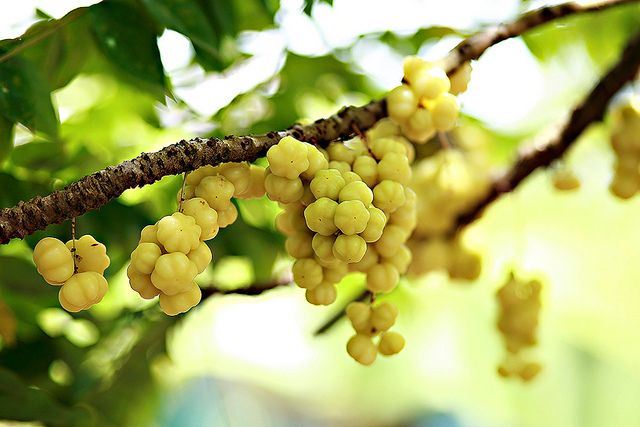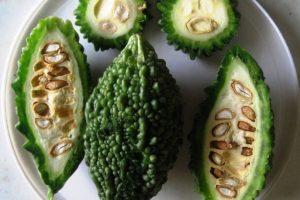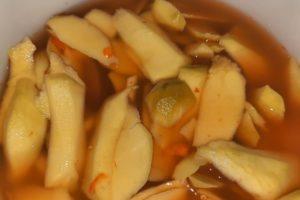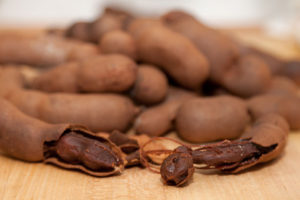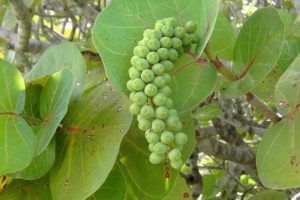If you are tired of sweet treats and candies then you can substitute with the sour but edible gooseberry. What is a gooseberry? It is a unique little plant-based food that is of the Phyllantanceae family. The tree grows to a height of between eight and eighteen metres, it has a crooked trunk and spreading branches, and the flowers are greenish-yellow. As for the fruit, it is nearly spherical, light greenish-yellow, quite smooth and hard on appearance, with six vertical stripes. Although they are sour, they are delicious especially when they are prepared in the various ways of the Guyanese culture.
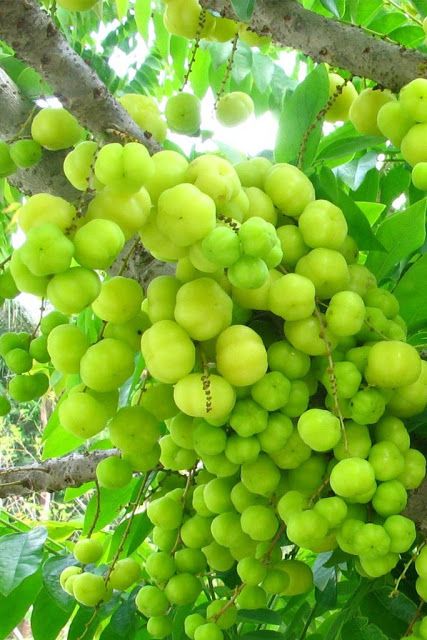
Image Source: https://upload.wikimedia.org/wikipedia/commons/2/20/Otaheite_gooseberry.JPG
Origin Of The Gooseberry
Originally, the local gooseberry trees were brought to Guyana from India. In India, the tree is known as Amla or Amalaki, and even though it may be a surprise to some, the normally overlooked gooseberry is a common ingredient found in ancient Ayurveda medicine coming from some of the world’s longest and oldest recorded texts.
Scientific Classification Of The Gooseberry
Gooseberry – Phyllanthus acidus [Scientific name]
- Kingdom: Plantae
- Clade: Angiosperms
- Clade: Eudicots
- Clade: Rosids
- Order: Malpighiales
- Family: Phyllanthaceae
- Genus: Phyllanthus
- Species: P. acidus
Features Of The Gooseberry Tree
Crown: The tree’s dense and bushy crown is composed of thickish, tough main branches, at the end of which are clusters of deciduous, greenish, 15 to 30 cm long branchlets.
Branchlets: The branchlets bear alternate leaves that are ovate or lanceolate in form, with short petioles and pointed ends.
Leaves: The leaves are 2 to 7.5 cm long and thin, they are green and smooth on the upper side and blue-green on the underside.
Flowers: The flowers can be male, female or hermaphrodite. They are small and pinkish and appear in clusters in 5 to 12.5 cm long panicles. Flowers are formed at leafless parts of the main branches, at the upper part of the tree.
Fruit: The fruits are numerous, oblate, with 6 to 8 ribs, and densely clustered. They are pale yellow or white, greenish, waxy, crispy, juicy, and very sour. There is a seed at the center of each fruit.
Health Benefits Of The Gooseberry
- Vitamin C: The gooseberry contains the most concentrated form of Vitamin C in the entire plant kingdom. One gooseberry contains approximately 20 times the Vitamin C content of an orange.
- Detox: The rich source of Vitamin C from the fruit acts as a great detoxifying agent for a sluggish liver.
- Healthy Skin: The Vitamin C also helps to make the skin clear and radiant.
- Anti-bacterial Properties: This helps to prevent infection and heals ulcers and hyperacidity.
- Strengthens Digestion: The gooseberry enhances the absorption of food by strengthening digestion, and is very refreshing, cooling, diuretic and laxative.
- Slimming Body: It reduces body heat or weight naturally, and restores stomach and intestinal digestive enzymes.
- Other: Scientific sources assert that, apart from Vitamin C, the gooseberry is a rich source of dietary fiber, calcium, phosphorus, iron, carotene, Vitamin B, protein and carbohydrates.
How Gooseberry Is Prepared In Guyana
Pickled Gooseberry
Ingredients:
- Gooseberries
- Vinegar
- Water
- Salt
- Pepper
- Sugar
Method:
- Pack gooseberries into a clean, wide mouth jar.
- Tuck in a couple of chilli peppers.
- Set aside.
- Mix vinegar, sugar, salt and any spices you’d like to use in a saucepan; bring to a boil.
- Stir constantly, until all the sugar and salt has dissolved, and the mixture becomes a bit syrupy.
- Pour evenly over gooseberries.
- Fill the jars with enough water to just cover the gooseberries.
- Seal tightly, shake to mix, then refrigerate for several days, turning bottles intermittently.
Gooseberry Jam/Syrup
Ingredients:
- Water
- Gooseberries
- Sugar
- Cinnamon
- nutmeg
- ground clove
Method:
- Add 3 cups of brown sugar and 2 ½ cups water. Add ground spice (cassia) or cinnamon stick, a little nutmeg, ground clove and simmer on low heat stirring a few times. When it comes to a boil it will go clear.
- Blanch your gooseberries by adding them to a pot of room temperature water and bringing them to a boil.
- After boiling, turn off the heat and drain them. This creates a wrinkled berry with a ruptured outer membrane. It makes it easier for the syrup to penetrate.
- Add your gooseberries to the syrup and boil for 1 hour on low heat.
- Your gooseberries would go from green to red.
- Add more spices during the cooking time and simmer without the pot cover.
Key Points:
- Blanch your gooseberries in water first.
- Make the syrup.
- Cook for about an hour in the spiced syrup and cool. As the syrup cools it gets very thick.
What How To Make Gooseberry Jam
Gooseberry In Guyana
Gooseberry is grown bountifully in Guyana. You will see trees in the backyards of many Guyanese; they love this fruit, children especially enjoy picking them and pickling them with a little salt and pepper. Some just wash it and eat it just as it is; it makes a healthy and delicious snack. They are sold in the local market and at the supermarkets. Persons pickle them and have them in baskets along with other fruits; they stand by the corner of streets to sell them or they walk and sell them. Gooseberries can be found at many or almost all school canteens in Guyana – both pickled and syrup. The gooseberry syrup is sweet and yummy, it is consumed by both young and old. Yes, gooseberry is a flavorsome and tasty snack for everyone.
Article References:
- http://guyanachronicle.com/2012/03/17/in-the-green-corner-45
- https://en.wikipedia.org/wiki/Phyllanthus_acidus
- https://www.geniuskitchen.com/recipe/pickled-mango-253868
- http://www.guyanadining.com/gooseberry-syrup-recipe/

